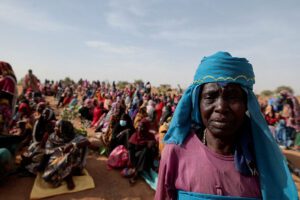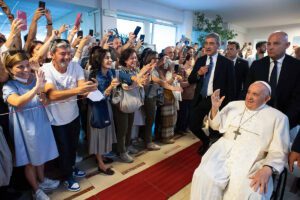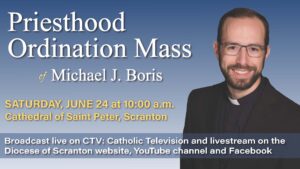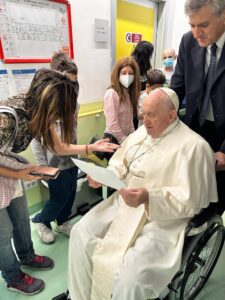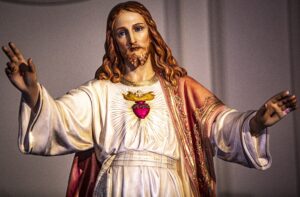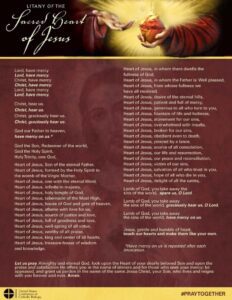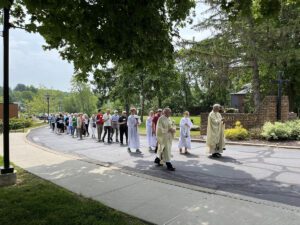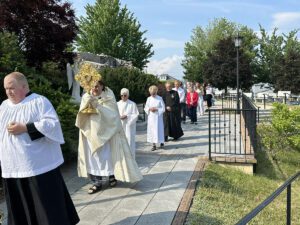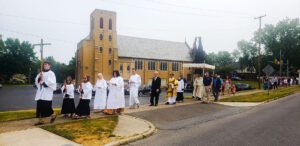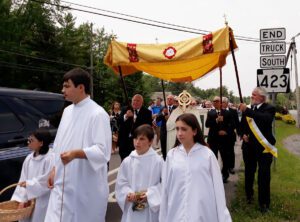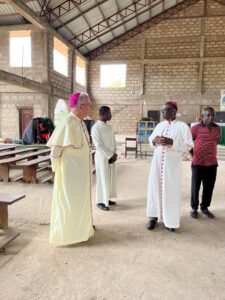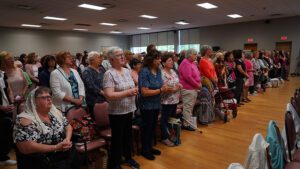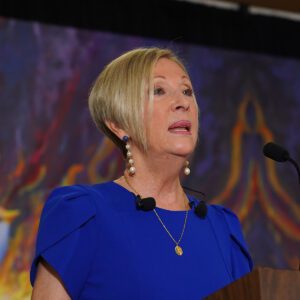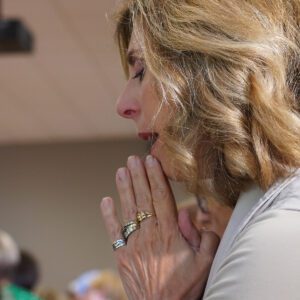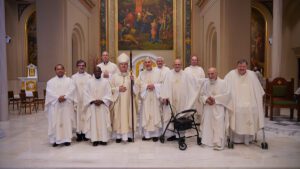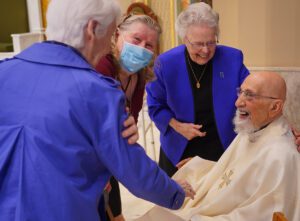(OSV News) — The U.S. bishops approved a new National Pastoral Plan for Hispanic/Latino Ministry to multiply pastoral responses addressing the realities of close to 30 million Hispanic Catholics in the U.S.
On June 16, with 167 supporting votes out of 171, the United States Conference of Catholic Bishops resoundingly approved a comprehensive plan aimed at responding to the needs of Hispanic/Latino Catholics in the U.S. and strengthening Hispanic/Latino ministries across the country at the national, local and parish level. The last time the U.S. bishops put forth such a plan was in 1987.
With a recent Pew Research Center analysis showing that 43% of Hispanic/Latino adults self-identify as Catholic in 2022, down from 67% in 2010 — and that the number of Latino Catholics drops to 30% for those ages 18-29 — the urgency to provide pastoral care for Hispanic Catholics is a high priority.
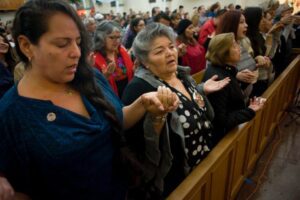
Ahead of the vote, Bishop Oscar Cantú of San Jose, California, chairman of the bishops’ Subcommittee on Hispanic Affairs, told OSV News that there was a great need to “get moving so that (the new pastoral plan) can be implemented in our dioceses and parishes.”
The plan has been in the works since the four-year the Fifth National Encuentro of Hispanic/Latino Ministry (V Encuentro) process that culminated with a national gathering in Grapevine, Texas, in 2018, though its advancement suffered a setback during the COVID-19 pandemic. It directly responds to the pastoral priorities and recommendations generated through the V Encuentro process.
The priorities listed in the plan include formation, accompaniment of families, immigration and advocacy, care for those on the peripheries, the promotion of vocations, and the need to engage with youth and young adults.
The pastoral plan calls on “pastoral leaders ‘to exercise their prophetic role without fear’ and to develop or promote specific pastoral responses to the issues that pervade their local communities, while also inviting the faithful to promote the common good on the national and global levels.” It also recognizes the unique ways Hispanic Catholics engage in their faith.
“For Hispanic/Latino ministry, evangelization also requires a deep appreciation for the gift of the living popular piety in our communities, a spirituality understood as mística, referring to ‘the motivations, profound values, traditions, prayer, music, art and methodologies that give life to a process of the people, create experiences of faith, and generate a spirituality that incentivizes faith and ministry,” said the document.
The document offers a renewed vision and mission for ministry among Latinos in the context of a culturally diverse Church and recommends the comprehensive response of the U.S. Catholic bishops through specific objectives and activities to be implemented over the next 10 years, Detroit Auxiliary Bishop J. Arturo Cepeda, who chairs the USCCB’s Committee on Cultural Diversity in the Church, said June 15, a day before the vote took place.
This “living document,” he said, is a sign of the times that recognizes Hispanic/Latino Catholics as “missionaries among us” that can reinvigorate the life of the church.
The pastoral plan encourages coordination between diocesan staff dedicated to serving the Hispanic/Latino community and other offices to prevent a “siloing effect,” noting that specific pastoral needs may vary from diocese to diocese. A key component of effective outreach at the diocesan level is to encourage vocations.
“The number of Hispanic priests and religious in the United States is not proportional to the number of Hispanic Catholics in the United States,” Bishop Cantú told OSV News. “There are social, economic and even legal reasons for that — and cultural ones. There’s a real need and desire to … create a culture of vocations among the Hispanic communities.”
Hispanics account for more than 40% of U.S. Catholics, yet media reports indicate that of the 37,300 U.S.-based priests, only 3,000 of them are Hispanic/Latino and of these, 2,000 are foreign-born. One of the plan’s added amendments mentioned at the spring assembly was to include the need to pray for vocations, particularly to the priesthood and religious life, in Eucharistic adoration and other forms of prayer.
In response to a comment during the presentation of the plan, in which a bishop mentioned the recent Pew analysis and the steady decline of Latino adults who self-identify as Catholics, Bishop Cantú acknowledged “the need for evangelization in the Hispanic community and simply pastoral care.”
“It has been five years since the national Encuentro in Grapevine. The community is waiting for this document,” Bishop Cantú said.
He added that many of the goals of this plan are already being implemented throughout the country and that the plan “will provide impetus and some guidance for our dioceses and our parishes for further development of activity.”
Recognizing the reality that many young Hispanics in the U.S. may be English-dominant, the pastoral plan also called for an active engagement with youth and young adults in both English and Spanish.
“Hispanic/Latino young people are a great treasure to the Church — as both recipients and protagonists of accompaniment and pastoral care — and they are uniquely situated as bridge builders among cultures, languages, generations and ecclesial experiences,” the plan said. “Our faith communities need to be a privileged place for welcoming, engaging, forming, and accompanying Hispanic/Latino young people through a variety of youth and young adult groups, ministries and initiatives (both in English and in Spanish) that empower them to be young missionary disciples in the context of their culturally diverse communities.”
Included in this outreach to young people should be an effort by Catholic schools to enroll and graduate Hispanic students. Bishop Cantú noted that in Latin America, many Catholic schools are seen as elitist, which could prevent Hispanic families from considering Catholic education.
Recalling his own parents who struggled with English when he was a child, the bishop argued for the importance of having people available to welcome Spanish-speaking families in schools.
“To have someone at the front office who can receive them and welcome them in their own language, that’s not unreasonable,” he said. “A lot of it is to dispel the impression that Catholic schools are elitist, that they are only for the upper-middle class or the rich. They are accessible, scholarships are available.”
Another pastoral priority is for the church to be a prophetic voice advocating for those affected by immigration.
“The work of missionary disciples is urgently needed amid the inhumane and immoral treatment of asylum seekers, families and unaccompanied minors, particularly at the U.S. southern border,” the plan said. “The Church’s long-standing support for immigration reform is not merely a humanitarian gesture or a struggle to achieve a justice-unfulfilled. Rather, our support signifies our efforts to accompany communities that too often remain at the margins and demonstrates our solidarity with them.”
The pastoral plan also received input from consultations related to the Synod on Young People of 2018 and the ongoing Synod on Synodality. The Subcommittee on Hispanic Affairs worked on the document during three years of consultation with diocesan and national leaders and with 12 USCCB committees.
Bishop Cepeda said the document “exhorts all dioceses, parishes, and other Catholic organizations and institutions to generate their own pastoral responses in light of the pastoral priorities, recommendations, and guidelines articulated in the plan.”
“It seeks to engage and form a new generation of Hispanic Latino leaders, both lay and ordained, who are interculturally competent and ready to serve the entire church and society in the United States of America,” he said.
The document called for initiatives of the plan to be implemented at the local level ahead of the 500th anniversary of the apparitions of Our Lady of Guadalupe coming in 2031 and 2,000 years after Jesus Christ’s death and resurrection, coming in 2033.
“In a unique way, Hispanics/Latinos find God in the arms of Mary, the Mother of God, where they experience her goodness, compassion, protection, inspiration and example, particularly under the advocation of Our Lady of Guadalupe,” the plan said. “We need this same missionary spirit to continue creating a culture of encounter and to animate our pastoral ministries over the next ten years, helping us journey together as joyful missionary disciples going forth in solidarity and mercy.”

